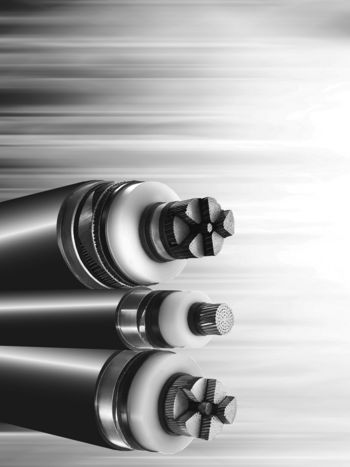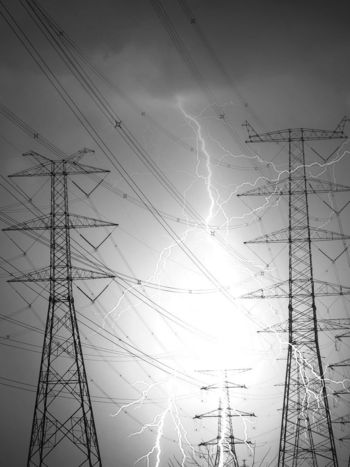Knowledge Transfer of Substation Engineering and Experiences
Substation knowledge transfer is becoming critical because of retirements, changing technology, hiring restrictions, and increased project assignments. This Technical Brochure will explore the methods which can be implemented by utilities and engineering consultants to transfer substation knowledge from seasoned to less experienced engineers and technicians. The Technical Brochure also investigates substation knowledge transfer from the perspective of millennial and gen Z engineers.
Members
Convenor (JP)
A. OKADA
Secretary (US)
J. CAMDEN
G. BUCHS (CH), F. FRAGA (BR), M. FURUYA (JP), J. GOOVAERTS (BE), A. IWATA (JP), L. KORPINEN (FI), M. MARTINEZ (PY), J. MEEHAN (CA), S. MULVEY (IE), I. ROHLEDER (CH), J. SKOG (US), R. SLEBODNIK (US), H. VERGNES (NL), K. WILLIAMS (AU)
Corresponding Members
H. CUNNINGHAM (IE), A. OLSON (US)
Special Assistants
P. COUGHLAN (AU) NGN T. HEINTZELMAN (US) NGN, T-L. MacARTHUR (AU) NGN
Introduction and Objectives
Knowledge and knowledge transfer have been vital to developing our power systems to the current state-of-the-art for the benefit and improvement of humanity. Volumes of knowledge exist to keep them working safely, economically, and resiliently. But nothing happens without effort, and nothing lasts without maintenance. We have the knowledge, but we are at a crossroads regarding knowledge transfer, perhaps like one never encountered before in the history of our industry to meet the challenge to progress onward without interruption.
The challenges confronting the substation engineering knowledge transfer are:
- The life cycle of most substations will be more than 60 years.
- The rapid turnover of aging and retiring experienced engineers challenges traditional knowledge transfer processes.
- Today’s engineers must know 3 to 4 evolutions of technological change in substation assets.
- Today’s graduate engineers are often exposed to a reduced power-oriented university curriculum.
Working Group B3.58 was formed to assess the state of substation knowledge transfer and prepare a Technical Brochure to provide practical guidance on transferring substation engineering knowledge and experience. The objective is to facilitate/optimise the knowledge transfer process and apply what adds real value, efficiency, and cost-savings to the process with respect to the currently available technologies, programs, practices while considering limited available resources.
Scope and Methodology
The scope of the Working Group included:
- Review/assess available institutional knowledge.
- Identify prudent techniques and engineering fundamentals to ensure the continuity of existing substations while creating the substations of the future.
- Identify and prioritize mandatory technologies and knowledge for transfer.
- Consider the full range of substation functional areas from planning, design, construction, commissioning, operation, maintenance, expansion, retrofit, retirement, and disposal.
- Consider the full range of related entities from utilities, consultants, and manufacturers.
- Explore ways to partner, integrate or leverage educational activities with universities, and manufacturers.
- Select the best transfer methodologies such as training, mentoring, job rotations, peer-to-peer collaboration, professional certification, advanced degrees, industry forums, seminars, tutorials, and conferences.
- Expose next-generation engineers beyond their university fundamentals to new training tools and find knowledge transfer techniques that resonate with the new generation of engineers.
Methods the Working Group utilized included: an industry survey, group discussions and sharing of experience, CIGRE Next Generation Network (NGN) member web-based workshops, and a CIGRE member live workshop.
Structure and Content
The Technical Brochure opens with an Executive Summary providing a general high-level statement of the problems and challenges of substation knowledge transfer, then stressing the benefits of acting on solutions and the consequences of failing to act. The focus of each chapter is summarized in the following sections.
Chapter 1: Introduction
This chapter covers introductory material on the challenge of and need for knowledge transfer in much deeper detail which is required to understand the concerns fully.
Chapter 2: Knowledge Transfer Needs Identification
Chapter 2 introduces the results of discussions and research conducted by the Working Group. The first step is to understand that experts identify three basic types of knowledge. First is explicit knowledge, acquired through university education and easy to articulate, document, and share. Second is implicit knowledge, which is the application of explicit knowledge on the job and may be partially documented in company design standards and specifications. Third is tacit knowledge, defined as skills, ideas, and understandings possessed by people (i.e., Subject Matter Experts) gained from personal experience that is not codified and is more difficult to express. Figure 1 shows the progression of these knowledge types.

Figure 1 - Basic knowledge types
With an understanding of knowledge types, the next step of a transfer initiative is identification, specifically identifying the essential at-risk knowledge, the keepers of the knowledge, the targeted receivers, and the timeline required.
Chapter 3: Overview of Survey and Workshop Results
This chapter summarizes the results of a Survey developed to identify industry trends, organizations’ plans to transfer specialized knowledge, utilization of related tools and technology, and best applicable transfer practices. The survey results validate the urgent need for improvements in substation knowledge transfer processes. The survey information was incorporated into the applicable chapters.
A summary of a WG B3.58 Workshop conducted at the 2022 CIGRE Session in Paris is also presented. This was another means to solicit input directly from engineers facing the knowledge transfer challenge. Feedback was gathered from attending delegates (Figure 2). Their input also validated the need for knowledge transfer and is included in the related chapters.



